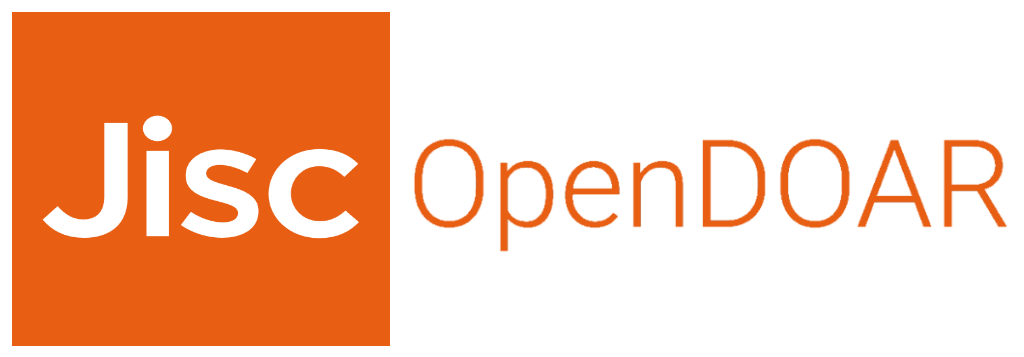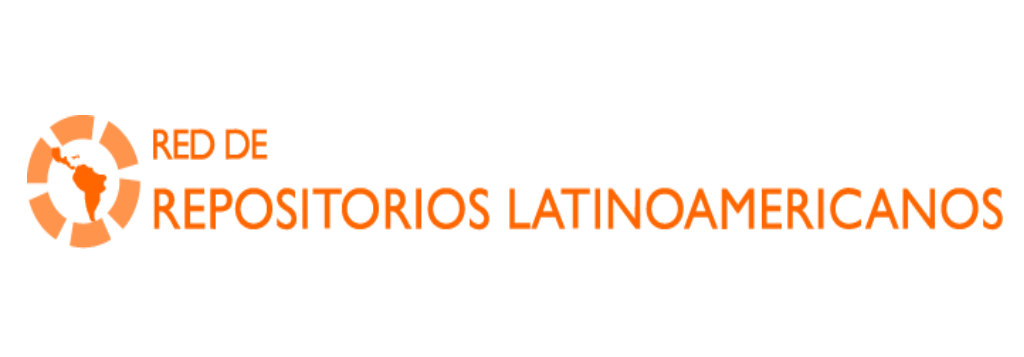Mostrar el registro sencillo del ítem
El uso de las redes sociales en el marketing de turismo terrestre en Colombia.
| dc.contributor.advisor | Hernández Hernández, Edgar Miguel | |
| dc.contributor.author | Susa Rodríguez, Jenny Carolina | |
| dc.contributor.author | Zamudio Prieto, Laura Andrea | |
| dc.date.accessioned | 2024-05-31T20:34:28Z | |
| dc.date.available | 2024-05-31T20:34:28Z | |
| dc.date.issued | 2023 | |
| dc.identifier.uri | https://repositorio.unicolmayor.edu.co/handle/unicolmayor/6979 | |
| dc.description.abstract | La presente monografía, realizada en el marco de la formación como administradores de empresas comerciales de la Universidad Colegio Mayor de Cundinamarca, comparte un estudio en profundidad del uso de las redes sociales en el marketing de turismo terrestre en Colombia. En un entorno digital en constante evolución, las redes sociales se han convertido en una importante herramienta para la promoción y difusión de los destinos turísticos. Este estudio tiene como objetivo analizar cómo las empresas de la industria turística colombiana utilizan estas plataformas para construir identidades atractivas, conectarse con los viajeros y adaptarse a las demandas cambiantes del mercado. A través de métodos de técnicas documentales, analizando el impacto y efectividad de las mismas en la promoción y desarrollo del turismo a nivel nacional, en un contexto donde las redes sociales han revolucionado los métodos de comunicación, comprender la forma en que las personas interactúan con la información y su papel en el turismo se convierte en una tarea fundamental para promover el crecimiento económico y la planificación de destinos locales. Esta monografía se centra en cómo las plataformas de redes sociales como Facebook, Instagram, YouTube, X y Tik-tok están cambiando las estrategias tradicionales de marketing turístico en Colombia, un país, conocido por su biodiversidad, riqueza cultural y paisajes diversos, que a su vez se beneficia de estas herramientas digitales, atrayendo a una audiencia global ávida de experiencias auténticas. A través de un enfoque multidisciplinario que combina conceptos de marketing, comunicación y tecnología, se analizan casos exitosos de campañas implementadas por agencias gubernamentales, empresas privadas y emprendedores locales. Las investigaciones muestran que las redes sociales permiten una mayor segmentación de las audiencias objetivo, facilitando así la adaptación de contenidos específicos a diferentes 4 segmentos del mercado. La posibilidad de compartir imágenes, vídeos e historias en tiempo real fomenta la difusión viral de contenidos relacionados con los destinos de viaje, ampliando el alcance de la campaña, estimulando la voz a voz digital entre los usuarios y creando un circuito de retroalimentación positiva. Sin embargo, identificamos un desafío importante: la saturación de información en las redes sociales que puede llevar a una pérdida de autenticidad y credibilidad. La gestión de la reputación online se ha convertido en una máxima prioridad, ya que las opiniones negativas pueden difundirse rápidamente y afectar la percepción de un destino turístico, por lo que se recomienda una estrategia integral que combine la promoción digital con la mejora continua de la calidad del servicio turístico. | spa |
| dc.description.abstract | This monograph, carried out within the framework of training as commercial company administrators at the Colegio Mayor de Cundinamarca university, shares an in-depth study of the use of social networks in tourism marketing in Colombia. In a constantly evolving digital environment, social networks have become an important tool for the promotion and dissemination of tourist destinations. This study aims to analyze how companies in the Colombian tourism industry use these platforms to build attractive identities, connect with travelers and adapt to changing market demands. Through qualitative and quantitative methods, such as surveys on social networks and content analysis, analyzing their impact and effectiveness in the promotion and development of tourism at the national level, in a context where social networks have revolutionized communication methods. Understanding the way people interact with information and their role in tourism becomes a fundamental task to promote economic growth and planning of local destinations. This monograph focuses on how social media platforms such as Facebook, YouTube, Instagram, X and TikTok are changing traditional tourism marketing strategies in Colombia, the country, known for its biodiversity, cultural wealth and diverse landscapes, which in turn benefits of these digital tools, attracting a global audience eager for authentic experiences. Through a multidisciplinary approach that combines marketing, communication and technology concepts, successful cases of campaigns implemented by government agencies, private companies and local entrepreneurs are analyzed. Research shows that social networks allow greater segmentation of target audiences, thus facilitating the adaptation of specific content to different market segments. The possibility of sharing images, videos and stories in real time encourages the viral dissemination of content related to travel destinations, expanding 6 the reach of the campaign, stimulating digital word-of-mouth among users and creating a positive feedback loop. However, we identified a major challenge: information saturation on social media that can lead to a loss of authenticity and credibility. Online reputation management has become a top priority, since negative opinions can spread quickly and affect the perception of a tourist destination, which is why a comprehensive strategy that combines digital promotion with continuous improvement of the reputation is recommended. quality of tourist service. | eng |
| dc.description.tableofcontents | Contenido Resumen 3 Abstrac5 Introducción 9 Objetivo General 12 Objetivos Especificos 13 Estado del Arte 14 Panorama general del problema que motiva la investigación 14 Antecedentes internacionales15 Antecedentes nacionales18 Marco de Referencia 25 Desarrollo 26 Influencia de las Redes Sociales en la Toma de Decisiones de Viaje 26 Formación de Imagen de Destinos Turísticos a través de Plataformas Digitales 27 Autenticidad y Credibilidad en la Promoción Turística en Línea 29 Un análisis psicológico y sociocultural 31 Análisis conceptual 35 Resultados 422 La Influencia de las Redes Sociales en el Marketing de Turismo Terrestre en las Principales Ciudades Colombianas 48 Aspectos, Hallazgos y Conclusiones 48 Conclusiones 56 Recomendaciones/Sugerencias 60 Referencias 61 | spa |
| dc.format.extent | 66p. | spa |
| dc.format.mimetype | application/pdf | spa |
| dc.language.iso | spa | spa |
| dc.publisher | Universidad Colegio Mayor de Cundinamarca | spa |
| dc.rights | Derechos Reservados - Universidad Colegio Mayor de Cundinamarca, 2024 | spa |
| dc.rights.uri | https://creativecommons.org/licenses/by-nc/4.0/ | spa |
| dc.title | El uso de las redes sociales en el marketing de turismo terrestre en Colombia. | spa |
| dc.type | Trabajo de grado - Pregrado | spa |
| dc.contributor.corporatename | Universidad Colegio Mayor de Cundinamarca | spa |
| dc.description.degreelevel | Pregrado | spa |
| dc.description.degreename | Administrador(a) de Empresas Comerciales | spa |
| dc.publisher.faculty | Facultad de Administración y Economía | spa |
| dc.publisher.place | Bogotá D.C. | spa |
| dc.publisher.program | Administración de Empresas Comerciales | spa |
| dc.relation.references | Baloglu, S., & McCleary, K. W. (1999). A model of destination image formation. Annals of Tourism Research, 26(4), 868-897. | spa |
| dc.relation.references | Berezina, K., Bilgihan, A., Cobanoglu, C., & Okumus, F. (2016). Understanding satisfied and dissatisfied hotel customers: Text mining of online hotel reviews. Journal of Hospitality Marketing & Management, 25(1), 1-24. | spa |
| dc.relation.references | Buhalis, D., & Foerste, M. (2015). SoCoMo marketing for travel and tourism: Empowering co-creation of value. Journal of Destination Marketing & Management, 4(3), 151- 161. | spa |
| dc.relation.references | Buhalis, D., & Law, R. (2008). Progress in information technology and tourism management: 20 years on and 10 years after the Internet—The state of eTourism research. Tourism Management, 29(4), 609-623. | spa |
| dc.relation.references | Buhalis, D., & Sinarta, Y. (2020). Real-time co-creation and nowness service: lessons from tourism and hospitality. Journal of Travel & Tourism Marketing, 37(1), 1-14. | spa |
| dc.relation.references | Cialdini, R. B. (2001). Influence: Science and practice (Vol. 4). Allyn & Bacon. | spa |
| dc.relation.references | Efaidnbmnnnibpcajpcglclefindmkaj/https://repository.universidadean.edu.co/bitstream/han dle/10882/12466/BohorquezLaura2022.pdf?sequence=1&isAllowed=y | spa |
| dc.relation.references | Efaidnbmnnnibpcajpcglclefindmkaj/https://Fontur.Com.Co/Sites/Default/Files/2020- 12/Guia_Pueblos_Patrimonio.Pdf | spa |
| dc.relation.references | Fernández, A., & García, M. (2019). El impacto de las redes sociales en el turismo terrestre en España. Revista de Turismo y Desarrollo, 25(2), 45-60. | spa |
| dc.relation.references | Fernández, S., & López, L. (2018). El papel de las redes sociales en la formación de la imagen de destinos turísticos en Uruguay. Estudios Turísticos, 35(2), 89-105. | spa |
| dc.relation.references | Fesenmaier, D. R., & Xiang, Z. (2017). Design science in tourism: Foundations of destination management. Tourism Management, 60, 434-449. | spa |
| dc.relation.references | Flanagin, A. J., & Metzger, M. J. (2013). Digital media and youth: Unparalleled opportunity and unprecedented responsibility. In D. Lemish (Ed.), The Routledge international handbook of children, adolescents and media (pp. 23-34). Routledge | spa |
| dc.relation.references | Gómez, M., & Rodríguez, A. (2022). Efectos de la interacción en redes sociales en la toma de decisiones de viaje en Argentina. Revista de Estudios Turísticos, 40(3), 120-135. | spa |
| dc.relation.references | González-Campo, C., Martín-Santana, J. D., & Cánoves-Valiente, G. (2016). Web 2.0 and the role of destination reputation and satisfaction in the tourists' intentions to revisit. Current Issues in Tourism, 19(9), 880-896. | spa |
| dc.relation.references | Gretzel, U., & Yoo, K. H. (2008). Use and impact of online travel reviews. Information and Communication Technologies in Tourism 2008, 35-46. | spa |
| dc.relation.references | Gretzel, U., & Yoo, K. H. (2013). Use and impact of online travel reviews. Information and Communication Technologies in Tourism 2013, 35-46. | spa |
| dc.relation.references | Gretzel, U., Sigala, M., Xiang, Z., & Koo, C. (2015). Smart tourism: foundations and developments. Electronic Markets, 25(3), 179-188. | spa |
| dc.relation.references | Hennig-Thurau, T., Hofacker, C. F., & Bloching, B. (2013). Marketing the pinball way: Understanding how social media change the generation of value for consumers and companies. Journal of Interactive Marketing, 27(4), 237-241. | spa |
| dc.relation.references | Hsu, C. H., & Kang, S. K. (2018). Travel decision-making using social media under the hierarchical needs model. Tourism Management, 68, 5-15. | spa |
| dc.relation.references | Kim, A. J., & Ko, E. (2012). Do social media marketing activities enhance customer equity? An empirical study of luxury fashion brand. Journal of Business Research, 65(10), 1480-1486. | spa |
| dc.relation.references | Kim, H. Y., & Chung, N. (2017). Customer segmentation and strategy development based on customer lifetime value: A case study. Tourism Management, 59, 200-212. | spa |
| dc.relation.references | Kim, J. H., & Kim, H. Y. (2017). The effect of social media marketing activities on customer engagement: Evidence from the hotel industry. Journal of Travel & Tourism Marketing, 34(5), 636-652. | spa |
| dc.relation.references | Kozinets, R. V. (2002). The field behind the screen: Using netnography for marketing research in online communities. Journal of Marketing Research, 39(1), 61-72. | spa |
| dc.relation.references | Law, R., Buhalis, D., & Cobanoglu, C. (2014). Progress on information and communication technologies in hospitality and tourism. International Journal of Contemporary Hospitality Management, 26(5), 727-750. | spa |
| dc.relation.references | Leung, D., Law, R., van Hoof, H., & Buhalis, D. (2013). Social media in tourism and hospitality: A literature review. Journal of Travel & Tourism Marketing, 30(1-2), 3- 22. | spa |
| dc.relation.references | Leung, D., Law, R., Van Hoof, H., & Buhalis, D. (2013). Social media in tourism and hospitality: A literature review. Journal of Travel & Tourism Marketing, 30(1-2), 3- 22. | spa |
| dc.relation.references | Li, X. R., & Wang, D. (2017). Engaging customers in the age of information proliferation: The role of social media. Journal of Business Research, 75, 166-176. | spa |
| dc.relation.references | Li, X. R., Wang, D., & Li, X. (2018). Social media and hotel performance: The moderating role of hotel type. Journal of Travel Research, 57(6), 712-722. | spa |
| dc.relation.references | Litvin, S. W., Goldsmith, R. E., & Pan, B. (2008). Electronic word-of-mouth in hospitality and tourism management. Tourism Management, 29(3), 458-468. | spa |
| dc.relation.references | López, R., & Martínez, J. (2018). La formación de imagen de destinos turísticos a través de Instagram: Caso de estudio de la Costa Caribe Colombiana. Investigaciones en Turismo, 15(3), 120-135. | spa |
| dc.relation.references | Neuhofer, B., Buhalis, D., & Ladkin, A. (2015). Technology as a catalyst of change: Enablers and barriers of the tourist experience and their consequences. The Routledge Handbook of Tourism and Hospitality Education, 176-188. | spa |
| dc.relation.references | Neuhofer, B., Buhalis, D., & Ladkin, A. (2015). Technology as a catalyst of change: Enablers and barriers of the tourist experience and their consequences. The Routledge Handbook of Tourism and Hospitality Education, 176-188. | spa |
| dc.relation.references | Pérez, D., & García, C. (2020). Impacto de las redes sociales en la elección de destinos turísticos sostenibles en México. Revista de Turismo Sostenible, 18(4), 55-70. | spa |
| dc.relation.references | Pérez, L., & Rodríguez, A. (2020). Autenticidad y credibilidad en la promoción turística en línea: Un análisis de la percepción del consumidor en México. Estudios Turísticos, 37(1), 89-105. | spa |
| dc.relation.references | Pine, B. J., & Gilmore, J. H. (1999). The experience economy: Work is theatre & every business a stage. Harvard Business Press | spa |
| dc.relation.references | Rodríguez, P., & Martínez, M. (2021). Estrategias de marketing de turismo terrestre en Colombia: Un análisis de casos. Revista de Marketing Turístico, 28(3), 135-150. | spa |
| dc.relation.references | Sánchez, C., & Gómez, E. (2017). Influencia de las redes sociales en la elección de destinos turísticos en América Latina. Revista Latinoamericana de Turismo, 10(2), 75-90. | spa |
| dc.relation.references | Sigala, M. (2017). Social media and the transformation of tourist experience: challenges and opportunities. Information Technology & Tourism, 17(4), 389-405. | spa |
| dc.relation.references | Sigala, M. (2018). Artificial intelligence in hospitality and tourism: Challenges, progress, and leadership perspectives. Journal of Hospitality Marketing & Management, 27(6), 621-642. | spa |
| dc.relation.references | Torres, E., & Ramírez, J. (2019). Percepciones de autenticidad y credibilidad en la promoción turística en línea en Chile. Turismo y Desarrollo Local, 25(1), 45-60. | spa |
| dc.relation.references | Torres, M., & Morales, P. (2021). El uso de las redes sociales en el marketing de turismo terrestre en Perú. Turismo y Sociedad, 25(1), 55-70. | spa |
| dc.relation.references | Wang, D., Li, X. R., & Li, X. (2018). A model of information flow in destination choice: Antecedents and outcomes. Journal of Travel Research, 57(6), 723-738. | spa |
| dc.relation.references | Wang, D., Li, X. R., & Li, X. (2018). Electronic word-of-mouth in hospitality and tourism management. Tourism Management, 67, 323-336. | spa |
| dc.relation.references | www.minambiente.gov.co/turismo-de-naturaleza-oportunidad-para-conocer-y-proteger-labiodiversidad- de-colombia/ | spa |
| dc.relation.references | Xiang, Z., & Du, Q. (2017). Role of social media in online travel information search. Tourism Management, 58, 248-260. | spa |
| dc.relation.references | Xiang, Z., & Gretzel, U. (2010). Role of social media in online travel information search. Tourism Management, 31(2), 179-188. | spa |
| dc.relation.references | Xiang, Z., Du, Q., Ma, Y., & Fan, W. (2017). A comparative analysis of major online review platforms: Implications for social media analytics in hospitality and tourism. Tourism Management, 58, 51-65. | spa |
| dc.relation.references | Xiang, Z., Du, Q., Ma, Y., & Fan, W. (2017). International tourists' images of a tourist destination: An online marketing approach. Tourism Management, 58, 1-11. | spa |
| dc.relation.references | Zhang, J., Zhao, J. L., & Tan, X. (2017). Peer effects on online shopping behavior: The role of reference groups. Marketing Letters, 28(1), 45-56. | spa |
| dc.relation.references | Zhang, K. Z. K., & Benyoucef, M. (2016). Consumer behavior in social commerce: A literature review. Decision Support Systems, 86, 95-108. | spa |
| dc.rights.accessrights | info:eu-repo/semantics/closedAccess | spa |
| dc.rights.creativecommons | Atribución-NoComercial 4.0 Internacional (CC BY-NC 4.0) | spa |
| dc.subject.proposal | Turismo | eng |
| dc.subject.proposal | Redes sociales | spa |
| dc.subject.proposal | Plataformas | spa |
| dc.subject.proposal | Empresa | spa |
| dc.subject.proposal | Marketing | spa |
| dc.subject.proposal | Estrategias Colombia | spa |
| dc.subject.proposal | Evolución | spa |
| dc.subject.proposal | Mercado | spa |
| dc.subject.proposal | Destino | spa |
| dc.subject.proposal | spa | |
| dc.subject.proposal | YouTube | spa |
| dc.subject.proposal | spa | |
| dc.subject.proposal | Tik-Tok | spa |
| dc.subject.proposal | Terrestre | spa |
| dc.subject.proposal | Consumidores | spa |
| dc.subject.proposal | Turistas | spa |
| dc.subject.proposal | Viajes | spa |
| dc.type.coar | http://purl.org/coar/resource_type/c_7a1f | spa |
| dc.type.coarversion | http://purl.org/coar/version/c_970fb48d4fbd8a85 | spa |
| dc.type.content | Text | spa |
| dc.type.driver | info:eu-repo/semantics/bachelorThesis | spa |
| dc.type.redcol | https://purl.org/redcol/resource_type/TP | spa |
| dc.type.version | info:eu-repo/semantics/publishedVersion | spa |
| dc.rights.coar | http://purl.org/coar/access_right/c_14cb | spa |



















